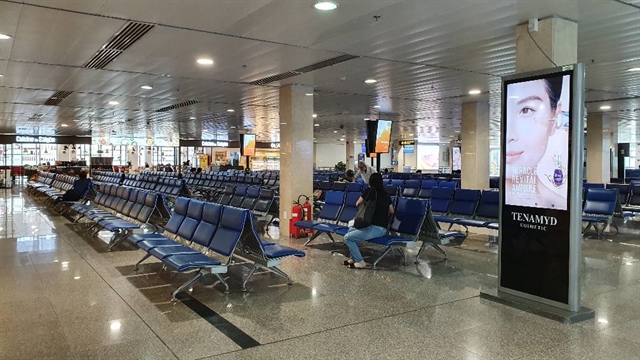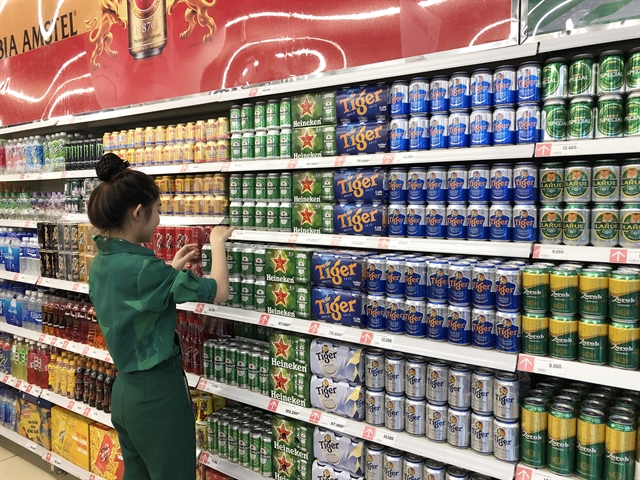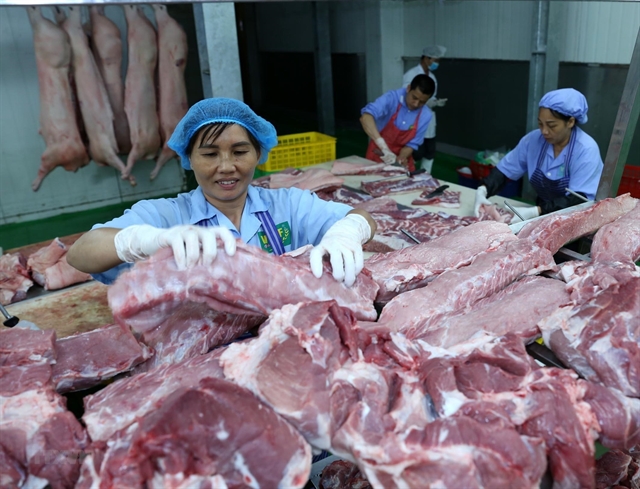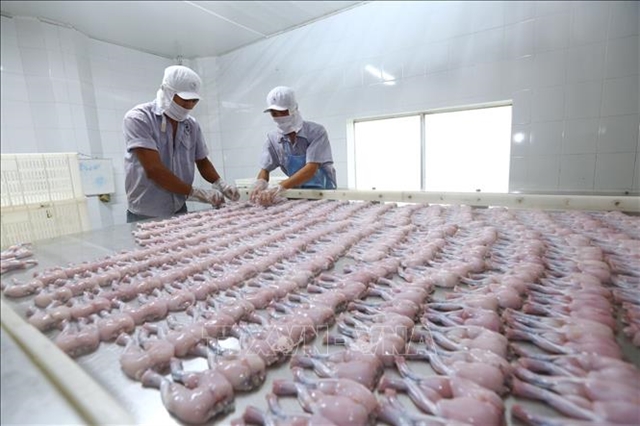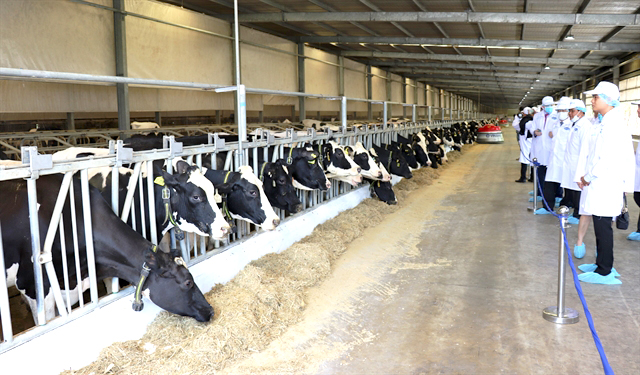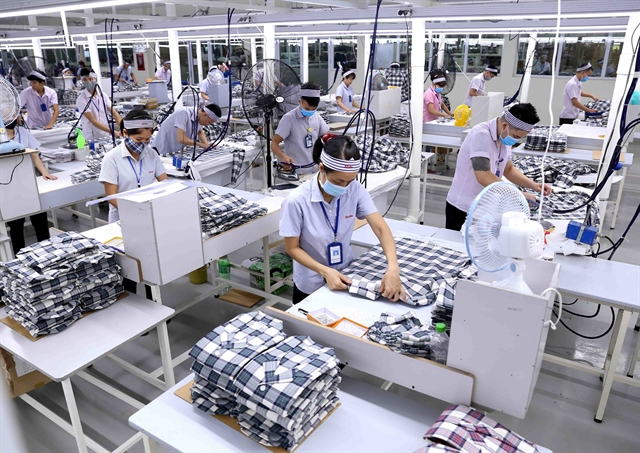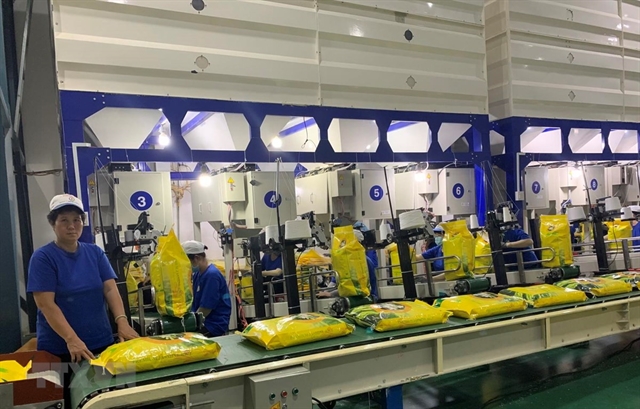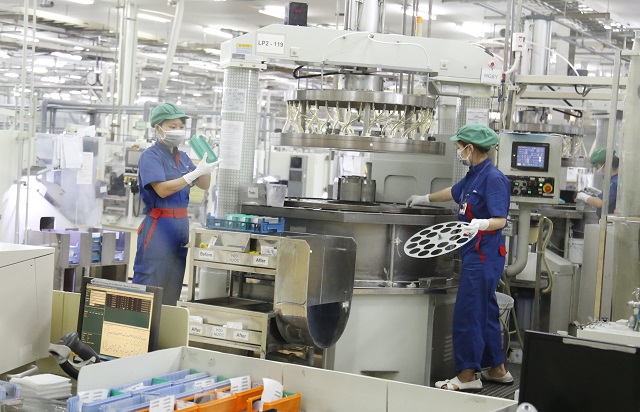Central bank cuts key rate again to boost lending
On August 1 the State Bank of Việt Nam cut its benchmark interest rate by half a percentage point to support the economy, which has been hit by the COVID-19 pandemic.
This was its third cut this year after an earlier 0.5-percentage-point reduction in May.
The cuts have translated into lower discount, refinancing and open-market-operation (OMO) rates, and lower loan interest rates to support businesses.
Soon after the central bank’s rate cut decision, a number of banks slashed their interest rates on deposits.
The State-owned Vietcombank, Vietinbank, BIDV, and Agribank reduced their rate on one-month deposits from 3.7 per cent to 3.5 per cent, three-month deposits from 4 per cent to 3.8 per cent and nine-month deposits from 4.6 per cent to 4.5 per cent.
Many joint-stock banks also followed suit, reducing their deposit interest rates by 0.1 percentage point.
Nguyễn Hoàng Minh, deputy director of the SBV’s HCMC branch, said banks have reduced their lending interest rates by 0.1-0.33 percentage points for businesses involved in production and trading.
However, credit growth has been modest, with some even reporting negative growth in the first few months of the year.
SeABank’s second-quarter financial statement shows that as of June 30 its loans outstanding were down by 1 per cent for the year to VNĐ98 trillion (US$..).
Saigonbank’s loans outstanding were down 2.79 per cent to VNĐ14.15 trillion.
Big players like BIDV and Vietinbank also saw low or no growth.
Analysts said the pandemic has dragged down demand for credit from both businesses and individuals.
According to an SBV report, by July end credit growth for the year was only 3.45 per cent compared with 7.13 per cent in late last year.
Economist Dr Nguyễn Đức Thành said most businesses find it difficult to sell their products, and therefore their demand for credit is down.
He suggested that the banking sector should lower the credit growth target for this year to 10 per cent from the original 14 per cent considering the economy’s current absorption capacity and GDP growth.
Dr Cấn Văn Lực, an independent banking analyst, said even if lending activities recover in the coming months, banks’ credit growth for the year would reach only 9-10 per cent.
While there may be no rate-cut boost to credit, experts said the lower deposit rates could have a positive impact on the stock market as people pull out deposits and see other asset classes.
Nguyễn Hồng Khanh of Vietnam International Securities Company said they would look to invest in real estate, gold and securities, but the property sector faces numerous difficulties and gold prices are possibly too high for them to enter. On the other hand, many shares have attractive valuations now, he said.
Market indices are down around 30 per cent for the year.
VN currency likely to edge down against greenback
Many analysts expect the Vietnamese đồng to gradually depreciate against the dollar.
According to Bảo Việt Securities Company, the State Bank of Việt Nam recently bought nearly US$2 billion worth of dollars to increase the country’s foreign exchange reserves.
According to Customs General Department data, the country’s trade surplus in July was nearly $2.8 billion, $2 billion higher than estimated earlier.
The surplus for the first seven months rose to $8.4 billion, five times the figure for the same period last year.
In the period foreign direct investment totalled US$10.12 billion, almost the same as in the year-ago period, according to the Foreign Investment Agency. FDI reached a 10-year high last year.
As of July 1,620 new FDI projects were approved with total registered capital of US$9.46 billion, up 14.4 per cent, while existing projects brought in an additional US$4.7 billion.
The result is that, as SBV Governor Lê Minh Hưng told a Government meeting in April, foreign exchange reserves are at a record US$84 billion.
In Việt Nam, individuals and businesses’ demand for the greenback as an asset class was down significantly since gold prices scaled new peaks, attracting investment inflows. Businesses’ demand for foreign exchange for international payments too was down as imports declined as a result of the Covid-19 pandemic.
With the inflation rate expected to remain at a benign 4 per cent or less, it is not expected to have a major impact on the exchange rate, experts said.
But on the other hand, overseas remittances to Việt Nam this year are forecast to decrease sharply as a result of the pandemic, and this could have an impact on the forex rate.
BVSC still forecast the đồng to depreciate by no more than 1 per cent against the dollar this year.
Fitch Solutions, a subsidiary of Fitch Group, had a similar view, predicting the forex rate would average VNĐ23,250 in 2020, down from its earlier estimate of VNĐ23,475.
But it expected the đồng to remain on a gradual depreciatory trend due to its persistent overvaluation and higher structural inflation in Việt Nam compared to the US, averaging VNĐ23,400 in 2021. — VNS
